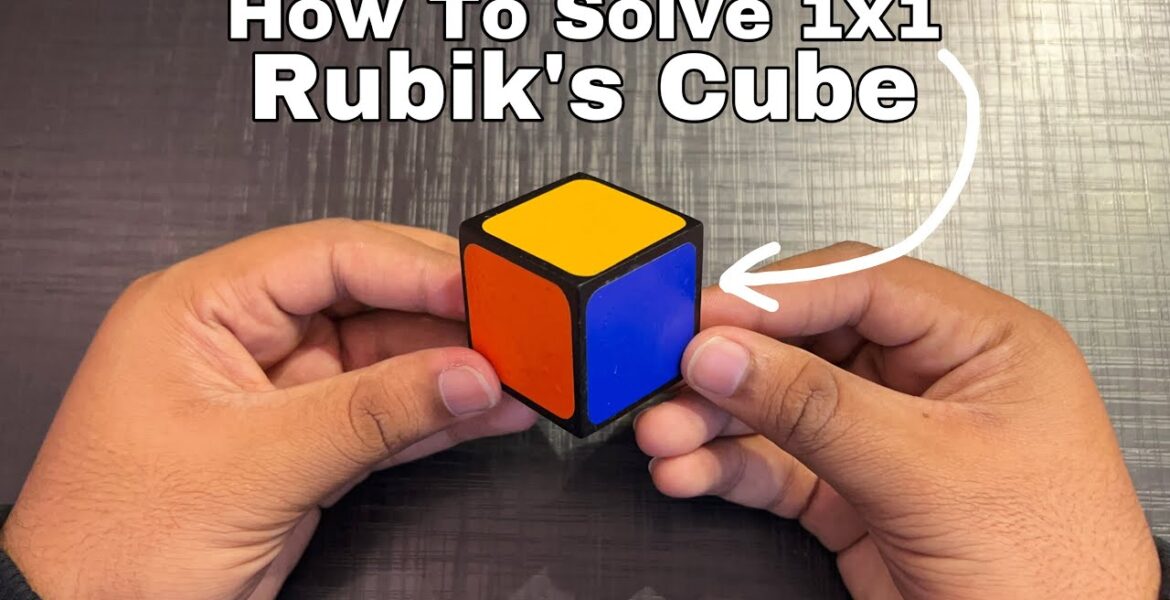
How to Solve the 1×1 Rubik’s Cube
It is true that the Cube 1x1x1 is one of the most challenging puzzles to solve. However, this cube is also very useful as it can be used for many things. It can be used for puzzles, electronics, fashion, accessories, and even grocery.
Calculate the number of sides
A 1×1 Rubik’s Cube is a type of jigsaw puzzle. In order to solve it, you need to know how many sides there are. The number of sides can be easily calculated by multiplying the length of one side. This is similar to how you would find out the volume of a cube.
As with any puzzle, the Rubik’s Cube is composed of multiple layers. Each layer has its own colour and is arranged clockwise in the order of its appearance. It also has movable corners. There is an internal pivot mechanism in each face that allows each piece to turn independently.
The easiest way to calculate the length of a cube’s side is to multiply it by the length of its longest edge. However, other formulas exist if you do not have a side’s length.
Calculate the number of squares
If you’re attempting to solve a Rubik’s Cube, you’ll need to know how to count the number of squares. There are two primary ways to do this.
One way is to calculate the number of corners in the larger cube. The number of corners is determined by the number of smaller cubes that have three faces painted. This is calculated by subtracting two cubes from each edge.
Another method is to count the number of smaller cubes with only two faces. This includes cubes on each corner, as well as cubes that are at each edge of the larger cube. It can be difficult to estimate the number of these cubes, though.
Using the formula for how to count the number of squares, you can calculate the number of faces in the smaller cubes. However, you must also account for the faces of the larger cube. For example, if you have six cubes on each edge of the larger cube, you’ll need to add up the numbers of corners in each of the six cubes to get the total number of faces in the entire cube.
Calculate the number of colors
The Rubik’s cube is a very popular puzzle and has been produced in many different sizes and dimensions. Solving it is a challenge, but not impossible. There are many mathematical methods that can be used to solve the puzzle.
First, the number of painted sides and faces of the cube can be determined. Each of the six faces of the cube has a different colour. This can be calculated by dividing the total number of unpainted sides and faces by the number of painted sides and faces.
There are two ways to turn the cube. One way is to turn the entire cube 180 degrees. Another is to turn it half-way. When the cube is rotated half-way, the face is turned in an anticlockwise direction.
For a three-face cube, the face with the same colour is positioned in one of four positions. For a four-face cube, the color that is adjacent to the same color determines where the remaining colors will be placed.
Calculate the number of vertices
When you try to solve the Rubik’s Cube, you need to know how many vertices there are. You can calculate this number of cubes by looking at the edges of the cube. If there are two painted faces, then you can calculate the number of cubes that have one face and are at the corners.
There are many different types of algorithms that can be used to solve a Rubik’s cube. Some are based on relative notation while others are based on mathematical algorithms. Both have a similar goal, to turn the cube in a particular direction.
The Wolstenholme algorithm is a great example of a relative notation. It is designed to make memorizing the sequence of moves easier.
Singmaster notation is another example of relative notation. This notation is based on the same letters as Wolstenholme, but uses vowels instead of consonants.
Carry the cube
The Rubiks Cube is a famous puzzle that became popular worldwide. It is a three-dimensional puzzle cube that can be solved by rotating all its pieces 180 degrees to square it up. This can be achieved in several ways, and there are 43 quintillion possible combinations.
To solve the Rubiks Cube, there are two main methods. One method is the corners-first method, which is the most common and simple method. You can also use the grips method, which requires you to line up all the colors in the center of the cube.
Another method is the Singmaster notation. Singmaster notation was invented in the mid-1970s, but was not widely understood at the time of its invention. In the Singmaster notation, each face is identified as a letter, with the prime symbol indicating the side’s clockwise direction. For example, T means top, L means left, R means right, and so on.
You may also like
Written by swsol
Archives
Calendar
| M | T | W | T | F | S | S |
|---|---|---|---|---|---|---|
| 1 | 2 | 3 | 4 | 5 | 6 | 7 |
| 8 | 9 | 10 | 11 | 12 | 13 | 14 |
| 15 | 16 | 17 | 18 | 19 | 20 | 21 |
| 22 | 23 | 24 | 25 | 26 | 27 | 28 |
| 29 | 30 | 31 | ||||
Leave a Reply